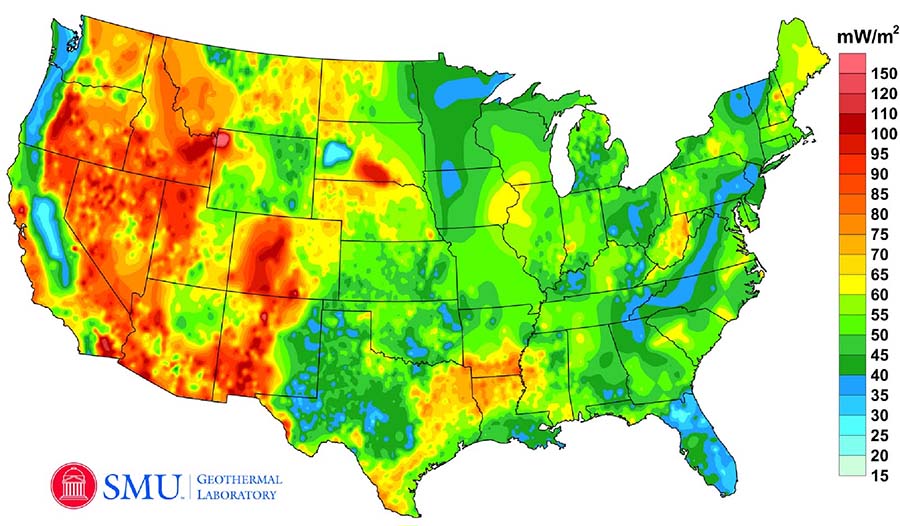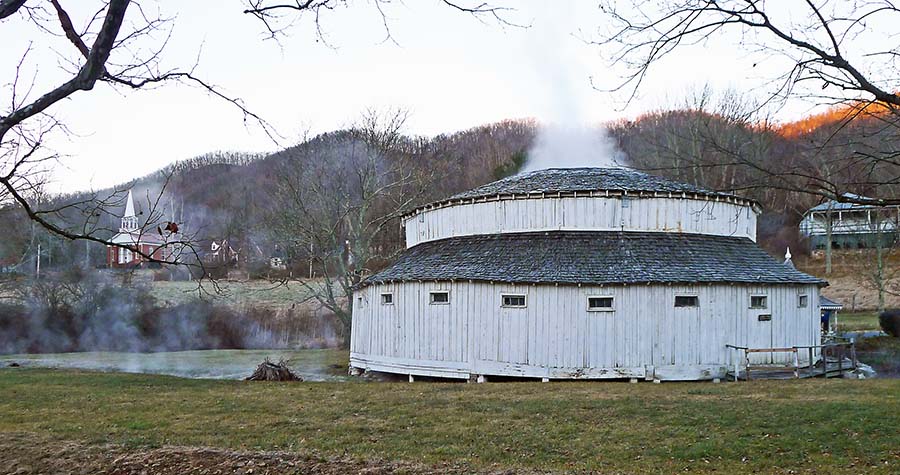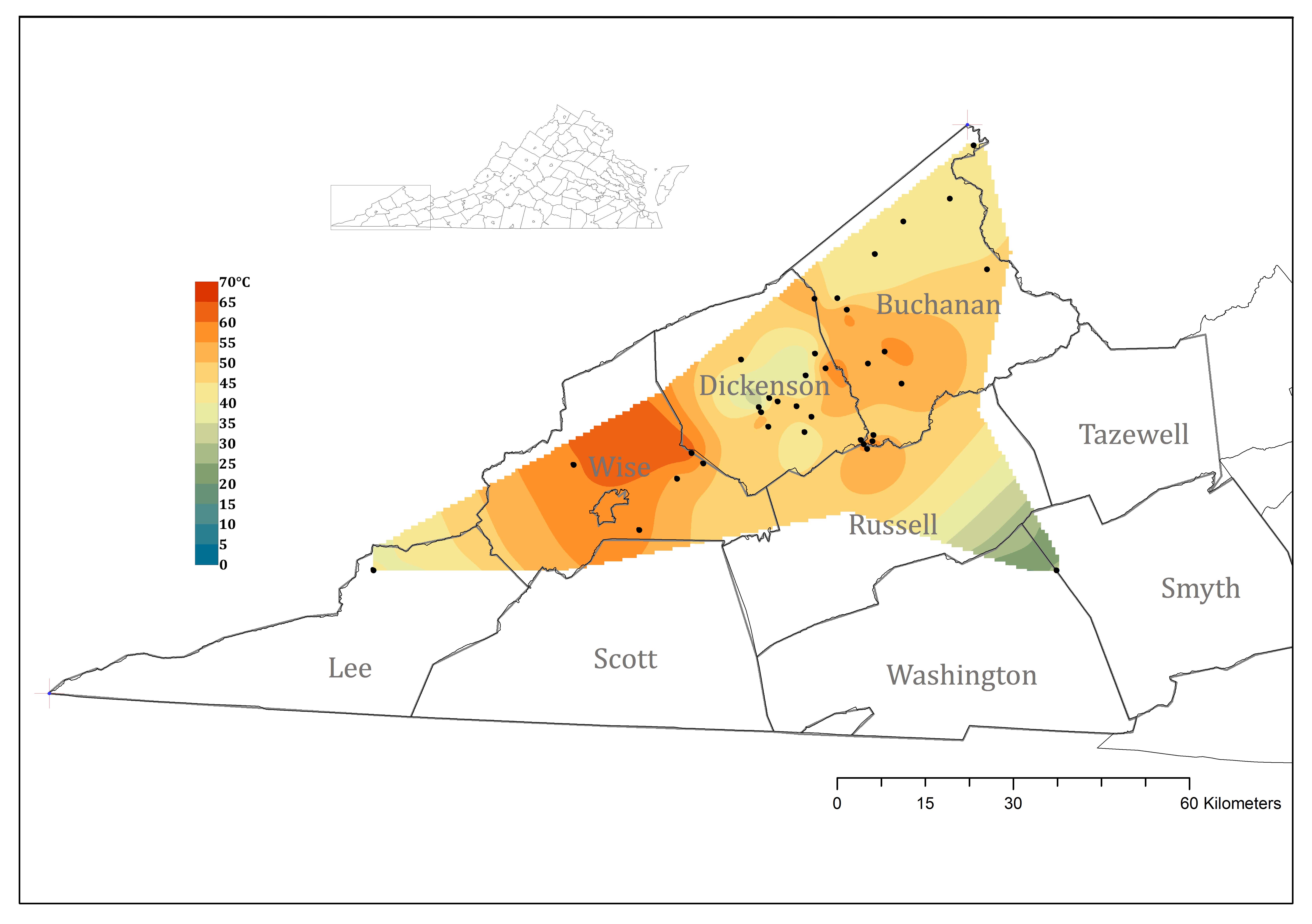What is Geothermal Energy?

Heat from Earth's mantle and crust is stored and transferred to Earth's surface
differently depending on geologic setting.
Geothermal energy is the heat produced by and contained within the Earth. It can be used as a clean, reliable, and renewable energy resource. Geothermal energy is an efficient heating and cooling alternative for residential, commercial, and industrial applications, and is potentially a significant source for electrical power generation in some regions of the United States.
In the western United States, geothermal energy is commonly associated with hot springs and geysers where high-temperature geothermal reservoirs form in areas of relatively recent volcanic and earthquake activity. In these locations groundwater circulates deep into permeable bedrock picking up heat and bringing it close to the surface creating a high geothermal gradient. Several of these reservoirs have been developed for commercial applications including direct heating, food dehydration, aquaculture, and electrical power generation.
In the relatively stable geologic environment of the eastern United States, heat-generating rocks are much deeper and geothermal gradients tend to be lower. Yet opportunities exist for developing lower-temperature geothermal resources that may include direct use, geo-exchange systems, co-produced geothermal with oil and gas resources, and enhanced geothermal systems (EGS).

Thermal springs, such as the Jefferson Pools in the town of Warm Springs, Virginia, have been a source for health and relaxation for Virginians for hundreds of years.
In Virginia, thermal springs in Bath and Alleghany counties have long been utilized as spas and resorts providing a direct use geothermal resource to the public since the 1760s. These hot springs originate from water that was heated deep within the Earth's crust and transported relatively quickly to the surface along geologic faults and fractures.
A rapidly developing technology centers on geo-exchange systems, which includes ground source, or geothermal heat pumps. This technology represents a reliable and efficient alternative to conventional heating and cooling systems in residential as well as commercial applications. Geo-exchange systems use horizontal trenches, vertical wells, and water bodies (ponds, lakes, etc.) to take advantage of the relatively constant temperatures in the subsurface to regulate indoor temperatures throughout the year.
Ground source heat pumps can be configured in several different ways depending upon site conditions. In the horizontal closed loop system, heat exchange fluids are circulated in a pipe loop installed in a shallow trench (4 to 6 feet deep). The vertical closed loop system may be installed in one or more vertical wells. This configuration works in a similar manner as the horizontal closed loop, but may be more appropriate for certain site conditions. A pond or other body of water may also provide the relatively constant temperature necessary for a closed loop system and has the advantage of lower cost of installation.

Typical ground source heat pump configurations.
Color contoured temperature in °C at elevation -1,200 m (-3,937 ft) below sea level datum. Preliminary results based on temperature logs from gas wells in the Southwest Virginia Coalfield.
In Virginia's coal and gas producing regions, warm water is often a by-product of fossil fuel production and generally considered a waste product. New developments in binary geothermal power generation utilizing lower temperature resources may make it feasible in the near future to co-produce geothermal energy along with traditional fossil fuel resources. Generally, the amount of water produced with natural gas in the Southwest Virginia Coalfield region is very small, yet the possibility of geothermal co-production from wells with higher water volumes, depleted gas wells or underground mine sites remains untested.
The diverse geologic setting of Virginia provides possibilities for enhanced geothermal system (EGS) technologies. Heat-generating granitic rocks situated at depths beneath insulating layers of sedimentary rocks, such as may occur in the Coastal Plain, can provide the necessary natural heat for geothermal development if permeability and/or groundwater supply and circulation can be artificially enhanced.
Our Role in Geothermal Research
In order to better assess national potential for geothermal energy, Geology and Mineral Resources has been participating in a project called the National Geothermal Data System (NGDS). The NGDS is a distributed network of databases for the acquisition, management, and maintenance of geothermal data, funded by the U.S. Department of Energy, and managed by the Arizona State Geological Survey. Geology and Mineral Resources has collaborated with the Maryland, Delaware, North Carolina, and Georgia state geological surveys and other state and federal agencies to compile data to help identify sources for geothermal energy in the eastern United States. The NGDS project has resulted in the compilation of over 60,000 data records for these states. Examples of these data include:
- Well information - Water, oil and gas, and geothermal well records including lithologic and geophysical data
- Depth to Bedrock - Measurements from borehole records across Virginia
- Hot Springs - Descriptions and water chemistry
- Geothermal Installations - Records of Virginia ground source heat pumps installed at schools and residences
- Thermal Conductivity - Measurements from a variety of targeted rock units
- Temperature - Measurements of temperature below the ground (borehole temperatures and temperature gradients)
- Heat Flow - Measurements from geothermal test wells
- Gravity and Aeromagnetics - Maps and measurements from scientific stations
- Digital Geologic Maps - Including detailed rock unit descriptions
- Online Publications - Relevant references for geothermal research
In addition to contributing to the development of the NGDS, Geology and Mineral Resources also used geothermal data from Virginia to produce map tools that could contribute to future investigations of geothermal suitability for Virginia. These maps include:
- Geothermal ground source heat pumps installations - a map of current geothermal heat pumps installed at residences and schools across Virginia
- Temperature at Depth - 14 maps illustrating temperature variability below the ground surface based on oil and gas and geothermal test well temperature data
- Heat Flow - statewide map of heat transfer based on measurements and calculations form geothermal test wells, and oil and gas well data
- Depth to Bedrock - measurements from boreholes across Virginia
View geothermal references here »
View interactive map here »
View National Geothermal Data here »
Geology and Mineral Resources Presentations
2011 Research Symposium, poster, (pdf)
2011 Digital Mapping Techniques, poster, (pdf)
2013 Research Symposium, presentation, (pdf)
2013 Geothermal Workshop, presentation, (pdf)
2013 Geological Society of Washington, presentation, (pdf)
Additional Geothermal Resources
Virginia Tech Geothermal Program
Southern Methodist University Geothermal Laboratory
US Geological Survey Energy Resources Program
US Department of Energy Geothermal Technologies Office
National Renewable Energy Laboratory
Geothermal Resources Council
Selected References:
Costain, J.K., L. Glover, III, and A.K. Sinha, 1982, Geothermal energy for the Eastern United States, Virginia Minerals, v. 28, no. 2.
This study was supported by a grant from the Arizona Geological Survey as part of the National Geothermal Data System (NGDS) project. The NGDS project was organized by the Association of American State Geologists with financial support from the U.S. Department of Energy, Geothermal Technologies Office. For more information about this program visit the NGDS web site: http://www.geothermaldata.org/









